April is for me the most exciting month in the garden , winter is finally over and new growth and the first flowers of our native plants are coming into bloom and for me the best of these is our common wall flower which not only is great to look at but the smell of a wall flower is unique and transports me back to ten years of age and an old fashioned cottage garden my Grandmother Nonie had created in Ballintaw , West Limerick , where I spent most of my summers in the 1950’s . Nonie also grew roses but they never registered in my mind like the wall flower did and does to this day … she was a formidable lady my grandmother and I would never have referred to her as Nonie to her face or I would be told to ” get down the half acre ” and many’s the goal I scored in that patch of ground playing soccer on my own with a tennis ball into a goal made of chicken wire strung between two sticks but to me it was Real Madrid and I was either Di Stefano or Puskas , happy days !
Another blast of early colour in the April garden is provided by the genista , spanish broom , which gives its all every year without fail , needs no special attention just a good haircut now and again .
A beautiful native plant but one for which the soil here is too wet normally for is rhododendron which needs a peaty spot but I have managed to create an area with banked up soil dredged from the stream when widening it which I use for a mass bed of hosta sieboldiana Elegans and the one solitary rhododenrom which is in full bloom just now in April .
Last month I mentioned dividing gunnera which is easy enough by digging through a clump with a spade which is what I did over 30 years ago in my first garden in Rosslare however all the gunnera I have planted here over the past ten years have been bought in garden centres and these have now spread out from a single clump in each location to a patch over two metres square so a division here and there is good for the plant and of course it is not a plant you see for sale that often as people are initially attracted to the size of the leaf but then put off by the fact that a mature gunnera can top out at three metres , both high and wide , so the garden centres are not stocking them much these days and even when they do they are itty bitty looking and I prefer to use my own divisions from now on … as you can see from the photo they look like dinosaur snacks even this early in the year !
For such a thick looking clump gunneras are surprisingly easy to split up , no great strength or digging required unlike for example arundo donax , the giant reed , which I split up last year and which is a real bugger to dig out almost requiring a jack hammer in the process ! After digging out a gunnera I don’t go in for any molly coddling and just replant directly into the ground where I want it to grow making sure of course that it is a wettish shady area and after a year or so of settling in it will go whoosh … apart from needing wet conditions gunnera also like a bit of protection against frost and I fold the leaves over the crown of each plant in November which apart from protection also serves to tidy up a plant which can look awesomely untidy when it’s big leaves die back .
This month my two big projects are the newly revamped rockery and the five new raised beds which I am building out of natural stone rescued from the Bianconi historic house in the centre of Clonmel and which has both antiquity and a lovely yellowish colour that fits well in the lower garden and already the one I have completed is adding to the area .
The two big rocks positioned last month looked a bit lonely so my neighbour , Sebastian , donated some large rocks from his land on the mountain and Peter Cullen carried three of them in his digger down to the garden and the rockery now looks complete although the jury is still out on what type of planting if any I put in apart from a miniature weeping Kilmarnock willow that was already there in another position and which I cut back and moved and it fits well .
As I often mention I love things with some antiquity in the garden such as this victorian stone trough over 100 years old which I found in an architectural salvage yard , carved from solid rock and so heavy it took three of us to lift it from the delivery van … a natural alpines container for the gravel garden .
I often wish I lived closer to Greece or Turkey where you might be able to pick up in some country market a piece of a real Roman or Greek column and somehow smuggle it out …. bad bad thought … and this from a former customs officer !
But staying with that theme here are some recent photos of columns , heads etc. from ancient sites in Turkey and Israel which I feel would look lovely here in this garden !!
Now this is a column !
And the most famous wall in the world
From a small child I have always been fascinated by natural stone and love working with it and once you realise that each stone has it’s natural good side then you are on the way to being a good dry stone wall builder . Dry stone walling is a technique that has been there since Neolithic times long before morter and cement were invented and you see terrific examples in the Galtee and Comeragh mountains close to Clonmel and years ago I watched dry stone builders build walls in Scotland and the Lake District in the UK .
First you select the largest stone for the base of the wall whatever the height and lean each topping stone layer inwards , I use earth between the stones as a filler and this allows me to plant small alpines but normally plants are not used apart from what self seeds naturally .
Each stone has it’s good side and you just don’t slap them on top of each other and hope they stay up … you turn it on each side and suddenly it clicks almost and that is it’s natural lie . All my raised stone beds are different as I go with the flow of the base rocks starting off in a general circle of the eventual size you want the raised bed to be but I prefer a slightly informal shape which suits the stone rather than force it into a perfect circle and this gives a looser look rather than the manicured look … after all it is natural stone not commercial brick where you need formality .
I always have use for good stone in the garden and I am always on the look out and often I mark nice stones on the road side when out walking and drive back later to collect them because as a gardener you can never have enough good stone .
I have visited all the famous european stone age standing circles such as Stonehenge , Avebury , Jordan and Carnac in Brittany and in 1972 I first read the book by famous archaeologist , Gerald Hawkins , Stonehenge Decoded , he was the first to come up with the now accepted theory that ancient standing stone circles were built and used around 3000 BC as ancient solar observatories to mark the seasons so that crops could be planted at the correct times .
Until recently accepted wisdom was that standing stones were first introduced in 3000 BC however new research in the past ten years has shown that at sites in Turkey standing stones were used in rituals as far back as 10,000 BC . The most famous so far is in Eastern Turkey close to the Syrian border at an isolated mountain site called Gobekli Tepi where the first stones were raised and carved around 8000 BC and which is currently being excavated and which I visited with Snezana in May 2012 .
Might be a problem getting this on a trailer !
And on the subject of ancient stone have a look at this gigantic stone head found at Nemrut Dag in Cappadocia in Turkey and carved in 200 BC on a mountain 2000 metres high , we visited and climbed to the site at sunset in May 2012 .

The original statue stood 30 metres high and dates from 200 BC , at Nemrut Dag , Anatolia , Turkey , May 2012.
A tree I have grown very fond of is the alnus aurea , golden alder , a very forgiving tree which does well here on our wet ground and which in fact likes boggy ground … a good looking foliage tree in summer while in winter the bark goes a nice white colour . I have had two growing here for five years and while not in the silver birch premier league class it still makes me step back when I see it and today when visiting the Clonmel Garden Centre to look for a structure to fill a space in a wet but sunny area , this multi stemmed golden alder stood out . Unfortunately it does not seem deer proof and even though they didn’t go near the two trees planted five years ago , last year I planted seven alnus’s in a group beside the new paths in the top field and the buggers ate three trees overnight to the ground and stripped branches from the surviving four trees … deer apart the golden alder is now one of my top choice trees .
I am often asked about planning in the garden and of course now that I am retired my time is my own and there are no constraints on how much or how little time I spend at it and I don’t envy gardeners who are combining the day job with trying to rush home to get the grass cut in a small window of opportunity when like washing out on the line it pours rain just as you are ready to go out or trying to balance family duties with the weekend off … been there and now I just relax into the work and if it doesen’t get done today well there is always tomorrow !
Days that I have a set project to complete such as the last two weeks when building the raised rock beds I just lash into it until it is finished but sometimes I just wander around from one task to another as for example this evening I was relaxing with a coffee after a heavy four hours hauling rocks around ( collapsed in a chair would better describe it ) and saw a nice burst of late April evening sun and decided a leisuredly ten minutes photographing my favourite daffodil which is in bloom just now , Winston Churchill , a double headed pink flowered daff , would be a nice way to end the day … down on my knees taking the photo I saw that the area needed drastic weeding and that the hostas were peeping above the ground so into the shed for the slug killer as hostas are martyrs to slugs and if not drenched in slug pellets you would have no hostas for the coming season … after doing the hostas by the stream I saw that the water cress and the parrot feather was beginning to root again in the water so back to the shed for the garden rake and another half hour pulling stuff out of the stream …. I have entire days like this in the garden when with no particular job on hand somehow I am on a roll effortlessly … there are also days when I just don’t feel like it and a rawhide whip wouldn’t get me into the garden !
Winston Churchill is unusual for a daffodil in that apart from being great to look at also has a fabulous smell .
In the water garden each spring for a very short period of time , literally days , the magnificent americanus lisichton blooms but it continues to throw up huge architectural type leaves that look like paddles throughout the summer , can be hard to get in a garden centre and I generally manage pick a few up every two or three years if lucky but don’t be tempted to smell the flower as it is not called the american skunk cabbage for nothing !
Recent visitors to the garden , two dotes , my neighbour , Irene Maber’s grandchildren , Sive and Saoirse .
When the rhododendron is in flower you know Summer is just around the corner !


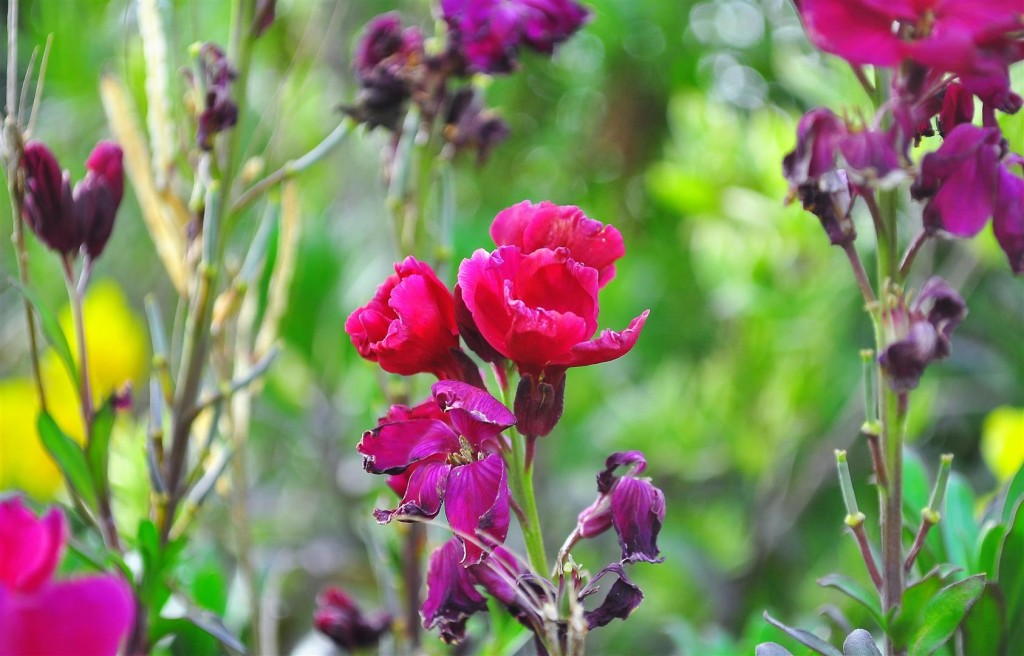
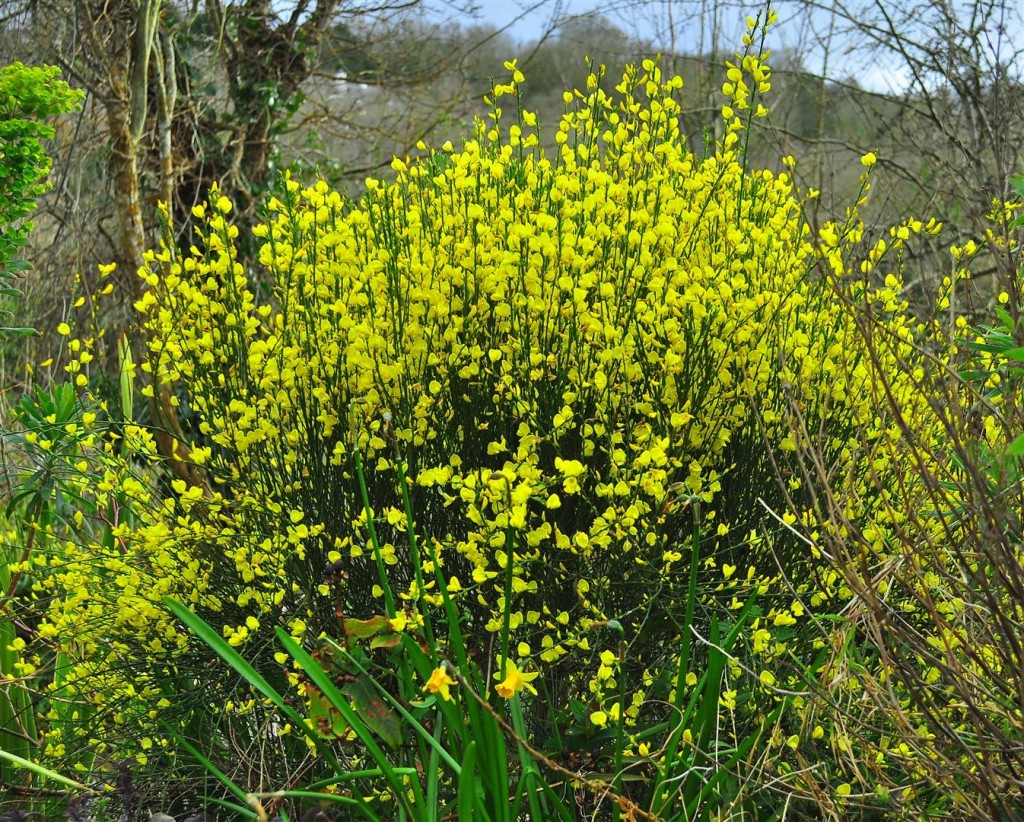
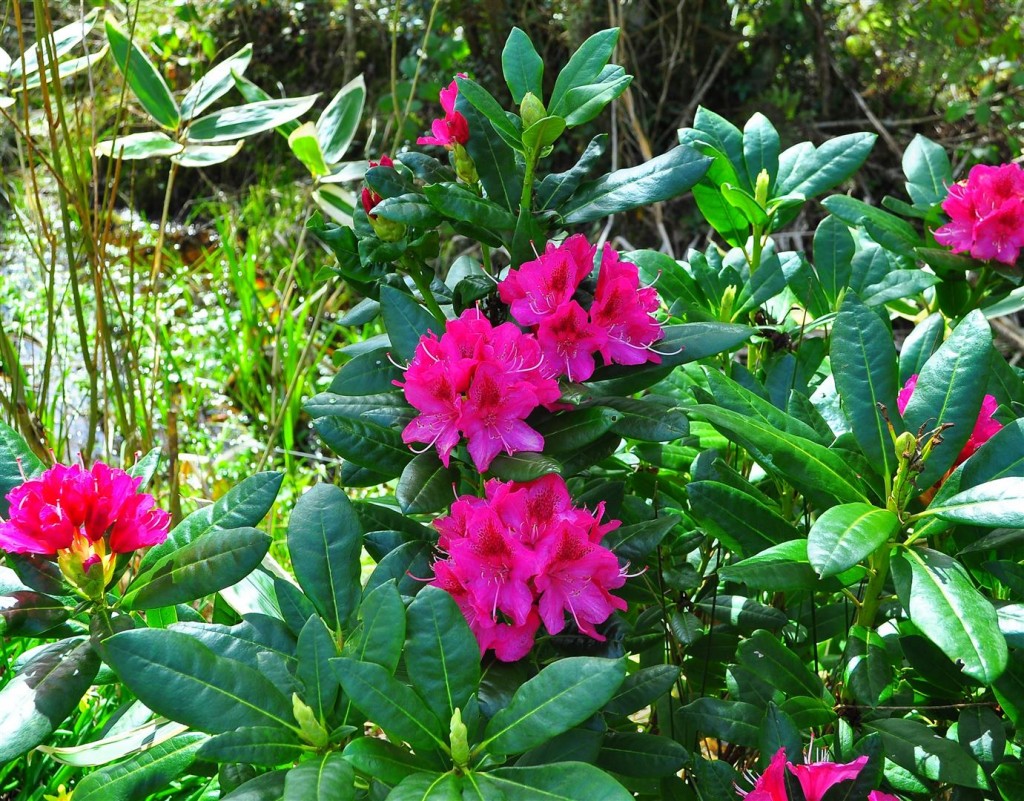
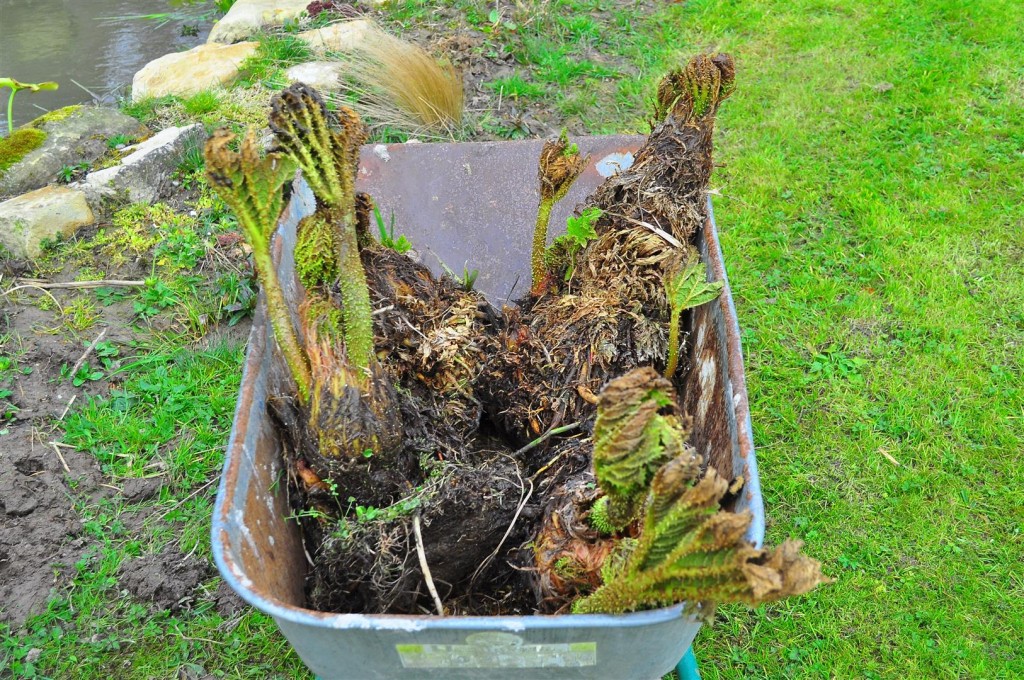

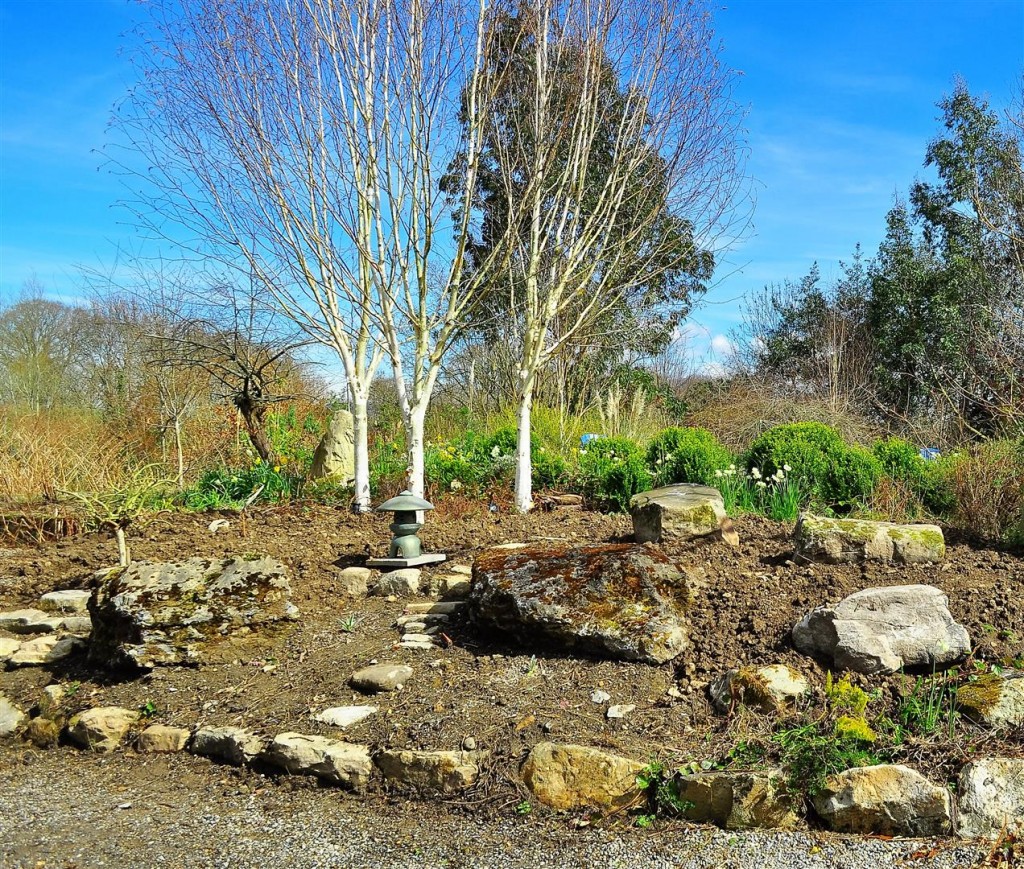
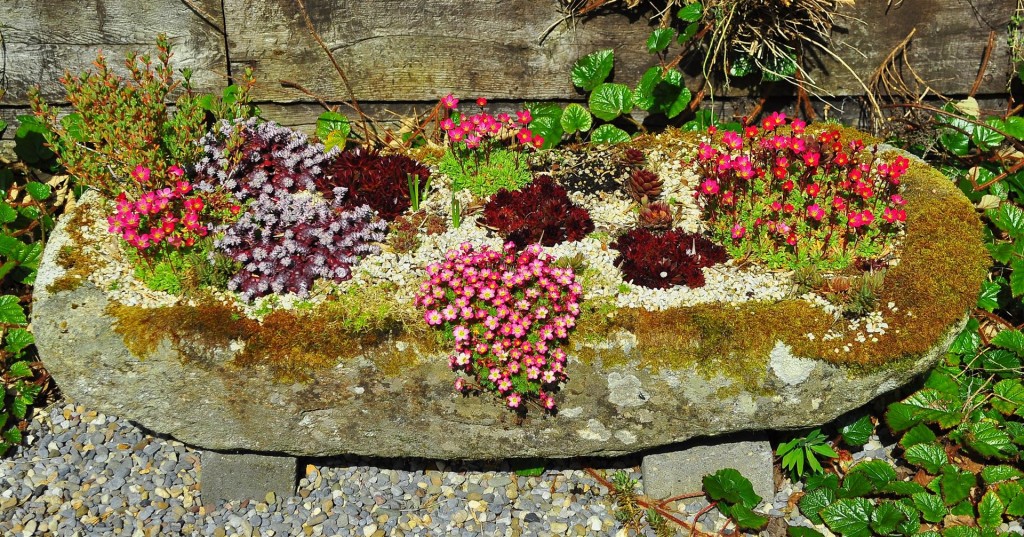

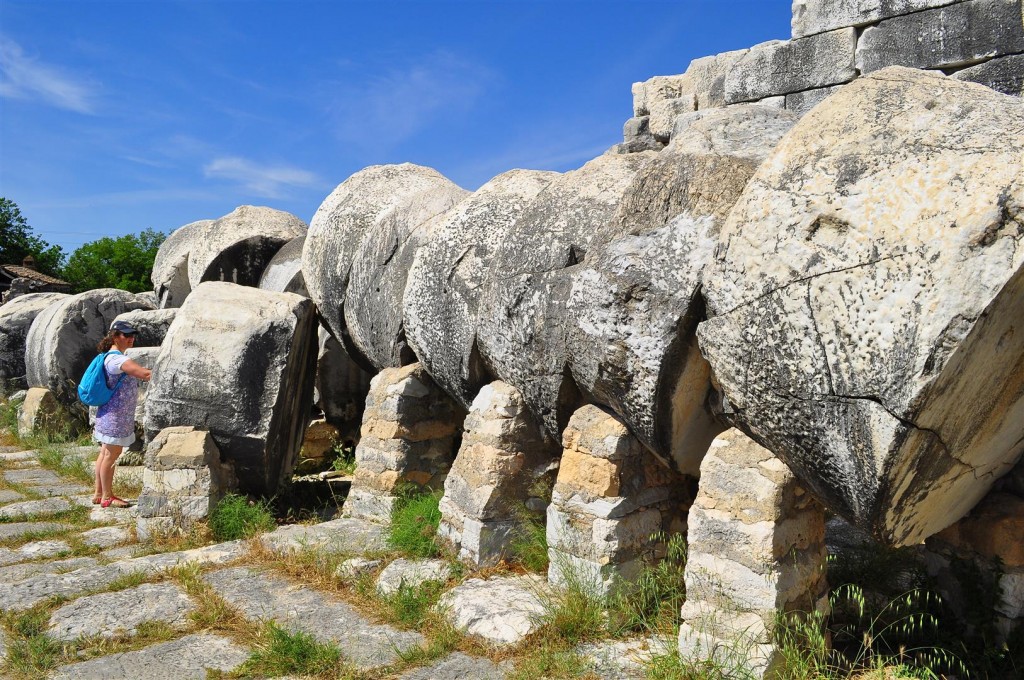


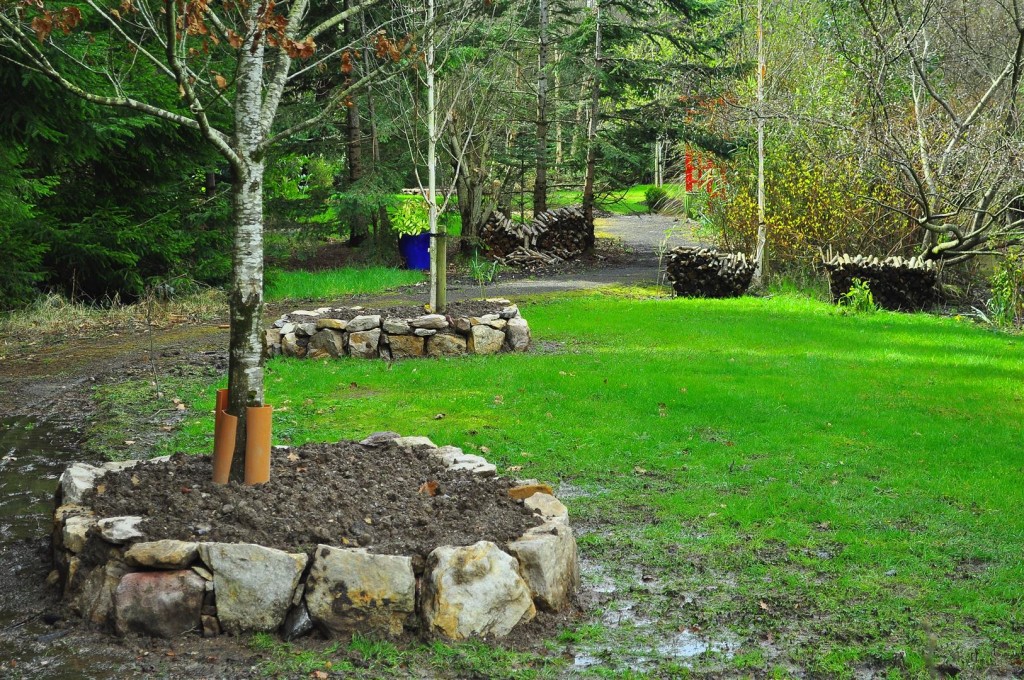

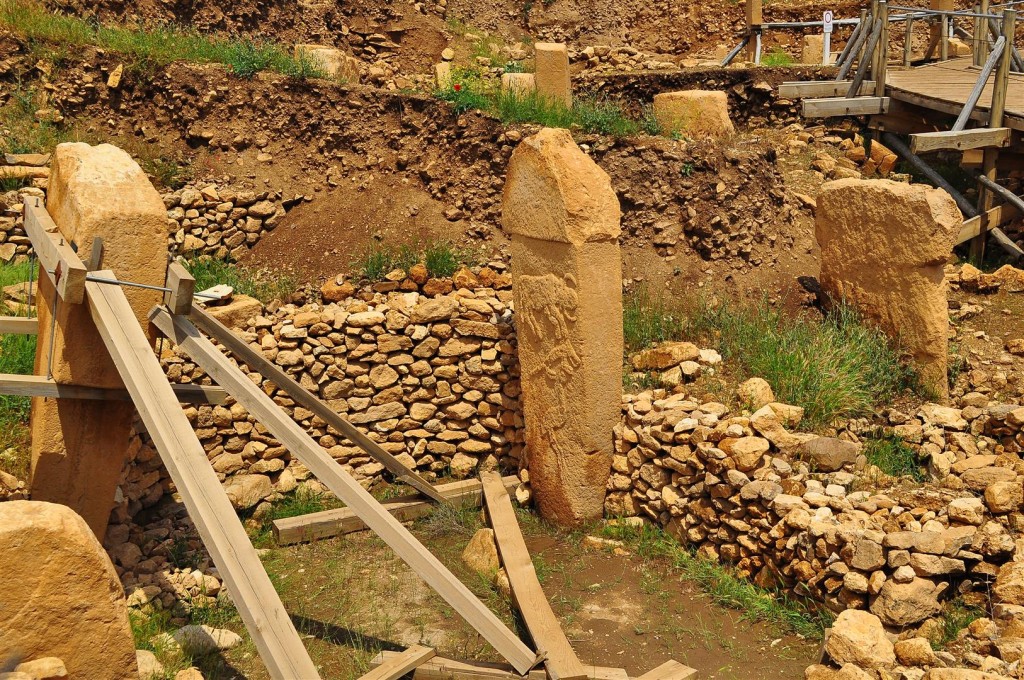
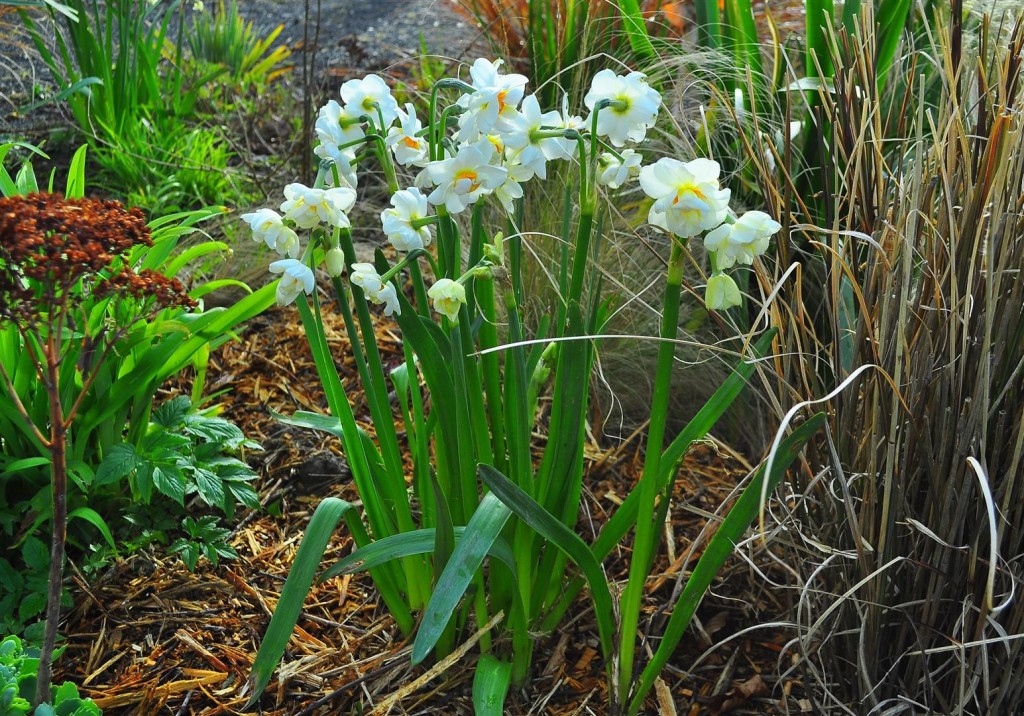
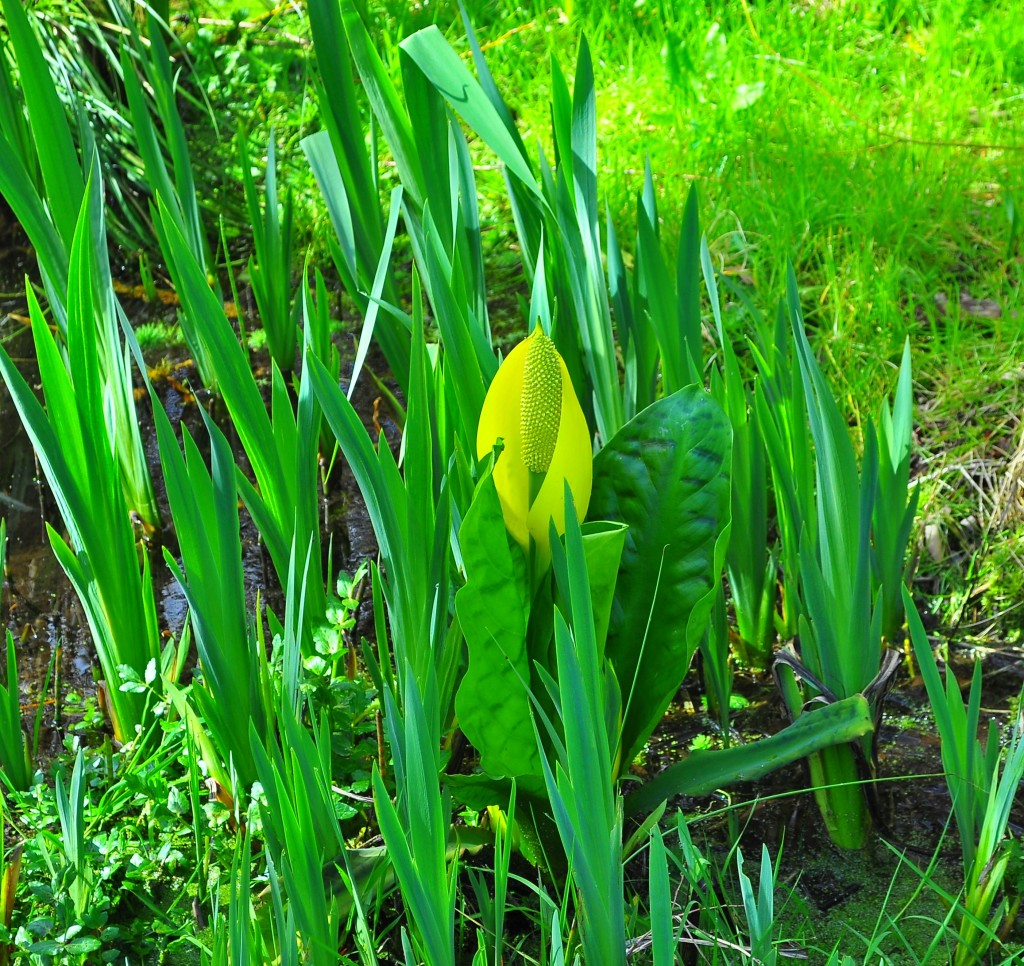

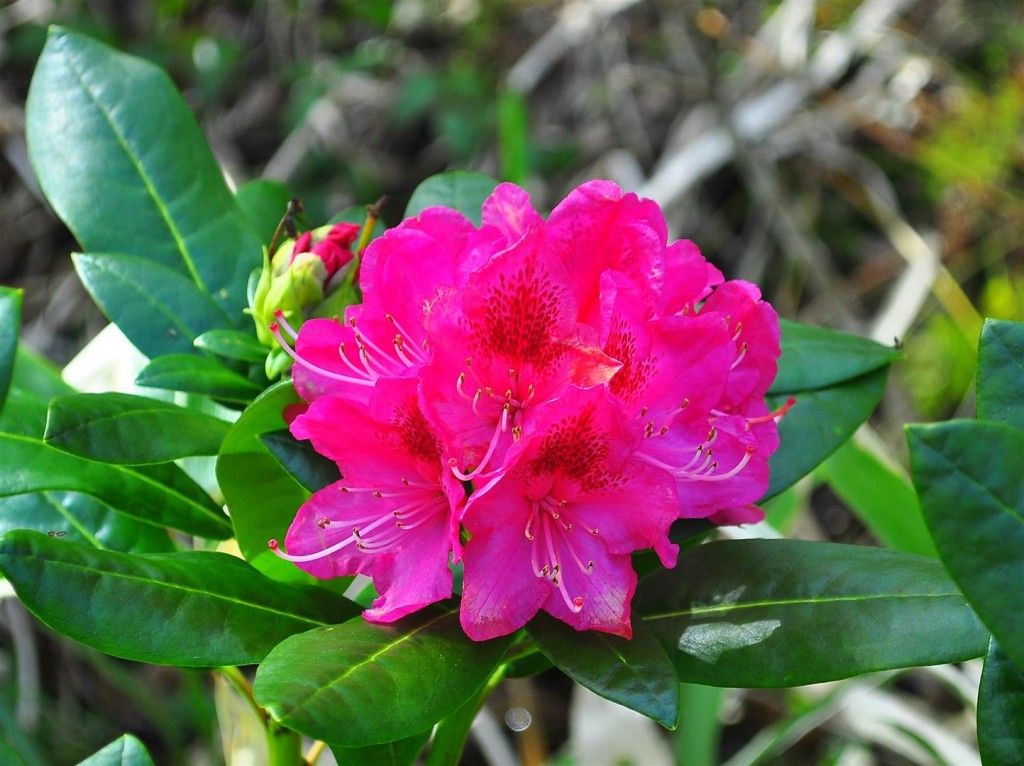
Leave a Reply